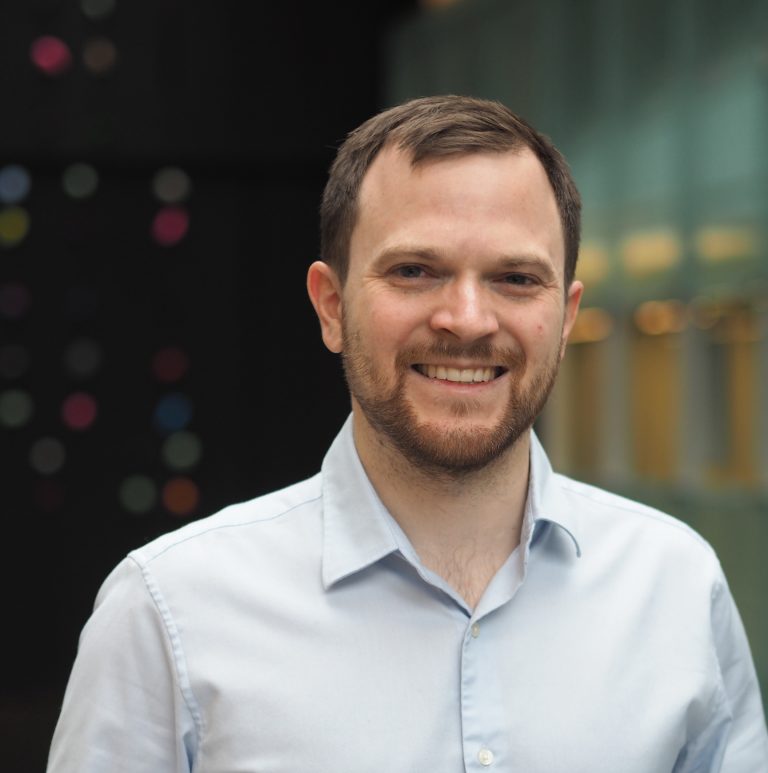Welcome to Moritz Münchmeyer's Cosmology and AI for Science Group
The research group of Prof. Moritz Münchmeyer is developing computational and theoretical methods to probe fundamental physics with cosmology as well as AI for science methods in physics. With our methods we are contributing to several experimental collaborations, in particular Simons Observatory, Rubin Observatory and CHIME-FRB. You can learn more about our research here. At UW Madison we are part of the Cosmology Group and the High Energy Physics group.
A part of our research is focusing on machine learning methods, which have exciting potential for cosmology and theoretical physics in general. With this work we are contributing to the Machine Learning Initiative of the Physics Department.
Moritz joined UW–Madison as Assistant Professor in January 2021. You can read his welcome interviews: Dept Interview | UW–Madison Interview
At UW–Madison we are fortunate to have a striving cosmology community with lots of interactions between the faculty and group members. If you are interested you are welcome to attend our weekly cosmology journal club.
If you are interested in joining our group please contact Moritz by email at muenchmeyer@wisc.edu or drop by his office 6205 in Chamberlin Hall.

Recent news
February 2025. Our Theoretical Physics Benchmark (TPBench) is our on arxiv. Check out the website tpbench.org.
October 2024. The NSF AI Research Institute in Astronomy SkAI is coming to the midwest, headed by Northwestern University! Happy to be involved as external member with my group!
Mai 2024. Lecture slides for my Spring semester course Physics 361 – Machine Learning in Physics, taught with Gary Shiu, can be found here.
March 2024. Our group has joined Simons Observatory as Institutional Members, together with Peter Timbie’s group.
December 2023. Congrats to Dr. Adam Rouhiainen who just defended his PhD thesis. Adam also presented his new paper Super-Resolution Emulation of Large Cosmological Fields with a 3D Conditional Diffusion Model at Neurips 2023 (Machine Learning in the Physical Sciences Workshop).
September 2023. Happy to teach my field, Computational and Theoretical Cosmology, to our grad students this fall in physics 805. PDF lecture notes are online here.
August 2023. We received the NSF grant “CDS&E: Probabilistic modelling of fields and point clouds in cosmology.” This grant will help us develop machine learning techniques to stochastically model the non-Gaussian matter distribution of the universe. We are also part of the just renewed DOE high-energy group grant of the UW Madison physics department.
June 2023. Some recent projects of our group. Grad student Yurii Kvasiuk developed new methods to analyze CMB data using auto-differentiation and machine learning. Postdoc Utkarsh Giri developed a new method to probe primordial non-Gaussianity with large-scale structure. Grad student Sai Tadepalli (with advisor Dan Chung) applied EFT methods to isocurvature perturbations.
April 2023. I’m looking forward to be part of the first cohort of our Data Science Institute (DSI) faculty fellows. The DSI, led by physics Prof. Kyle Cranmer, will bring together data scientist from all areas of UW Madison.
June 2022. Our group, together with Prof. Gary Shiu (physics) and Prof. Kangwook Lee (ECE/CS), has received a UW Madison Research Forward Grant for the project Reconstructing the Big Bang with Physics-Guided Machine Learning. We are looking forward to developing new ideas together with Machine Learning researchers here at UW, with the ultimate goal of learning more about the physics of the universe.
Mai 2022. Really interesting paper led by postdoc Utkarsh Giri about measuring f_NL with a neural network. The method combines an analytic method (scale-dependent bias) with the statistical sensitivity of a neural network, to obtain robust constraints.
June 2021. CHIME-FRB published its first Fast Radio Burst catalog, starting a new era of FRB physics with large statistical samples. At UW we contributed to the statistical analysis of this data. You can read more about this here.
May 2021. Congrats to Adam for leading his first paper, Normalizing flows for random fields in cosmology, which applies a new Machine Learning method to statistical fields in cosmology. We are working on several exciting applications of this method.
More news on x.com/moritzmunchmeyr